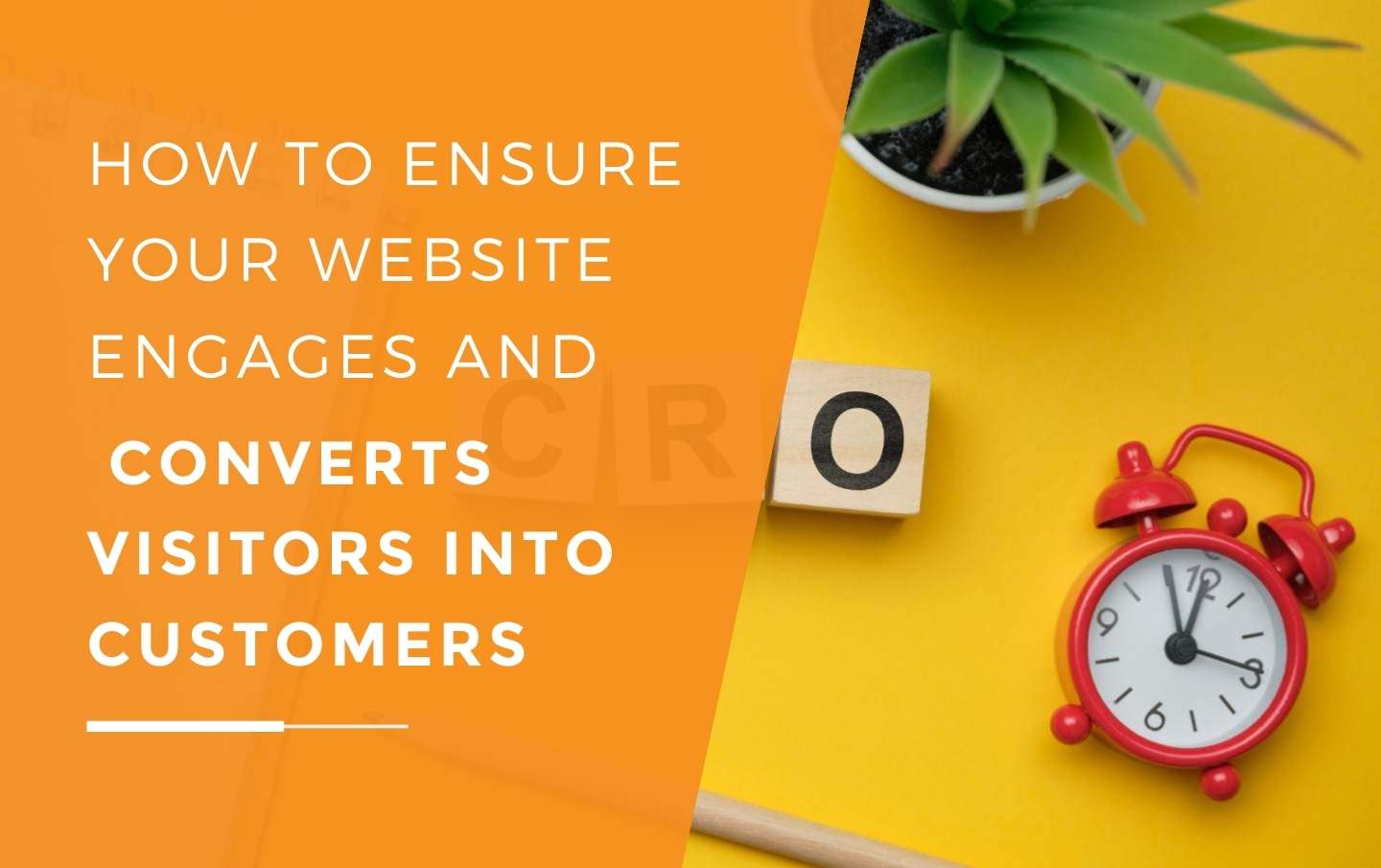Improve Your Website User Experience To Get More Online Sales
by Amber Denton on 19-Jun-2023 01:30:00

User Experience, or UX, is one of the most important buzz phrases of modern web design, and for good reason. In a world in which every business has a website, you have to do something quite special in order to persuade customers to spend time on yours. To put it bluntly, there is enough choice out there for customers not to have to put up with a second-rate user experience.
What can you do to improve your website UX and how can it help you get more online sales?
1. Implement Clear And Intuitive Navigation
A key component of an excellent UX is ensuring that your visitors can quickly and easily find the information they require. To do this, start by creating a clear and intuitive navigation menu at the top of your site that covers all the essential sections of your website. Keep the menu structure simple and straightforward, using clear language that resonates with your target audience.
Action Steps:
- Evaluate your current navigation structure and identify areas for improvement.
- Organise content into logical groupings of top-level category pages and sub-pages for easy access.
- Test your revised navigation with real stakeholders to ensure it is effective.
2. Optimise Your Website For Fast Load Speeds
Slow-loading websites are not only frustrating but can also be detrimental to online sales. A study by Google found that 53% of users will abandon a site if it takes longer than 3 seconds to load. To keep your users engaged, make sure your website loads quickly by optimising image and video sizes, compressing files, and using browser caching techniques.
Action Steps:
- Test your website's load speed using tools like Google's PageSpeed Insights.
- Monitor your website's speed on different devices and operating systems.
3. Enhance Mobile-Friendliness
With the increasing usage of mobile devices to access B2B websites, it's more important than ever that your website is ultra mobile-friendly. Responsive design (i.e. a website coded to automatically adjust its layout and content presentation to different screen sizes and mobile browsers) is crucial for delivering a seamless browsing experience, regardless of the device a visitor is using. Implementing a responsive design will help you retain mobile users and increase the likelihood of them making a lead enquiry or purchase.
Action Steps:
- Regularly test your website's mobile-friendliness using Google's Mobile-Friendly Test.
- Ensure your text is legible on mobile screens without needing to zoom.
- Use large, easily clickable buttons designed for thumbs on small screens.
4. Make It Easy For Your Customers To Get In Touch Through Obvious CTAs And Contact Forms
To drive online sales and leads, you need to guide users towards the actions you want them to take, making it as straightforward and fast as possible. Effective call-to-action buttons (CTAs) and accompanying contact/signup forms are essential tools for converting website visitors into customers. Make sure your CTAs are clear, persuasive, and draw users' attention, and include a means of contact on every page.
Action Steps:
- Identify the key actions you want users to take on each page of your website, such as making a purchase, downloading a guide, signing up for a newsletter, or contacting your business.
- Keep your CTA copy concise, specific, and action-oriented.
- Place CTAs strategically throughout your website, including your blog and product pages.
- Use contrasting colours to help your CTA buttons and forms stand out.
5. Utilise A/B Testing For Continuous UX Improvement
One challenge many SMEs face is determining which site elements resonate best with their target audience. A/B testing is a proven method for unearthing valuable insights and continuously improving your website's performance.
With A/B testing, you create two versions of a page (A and B) with slight variations in elements such as headlines, content, buttons, or images. Visitors are presented with either version randomly, and you compare the conversion rate of each to determine which performs better.
A/B testing an entire website is a huge undertaking, so start by running A/B tests on pages with high traffic and low conversion rates. Remember to test one element at a time and give each test ample time to gather data before drawing conclusions.
Action Steps:
- Identify a specific goal, such as increasing newsletter sign-ups or improving the checkout process.
- Test one element at a time for the clearest results.
- Use A/B testing tools like Google Optimise to determine your most popular pages and elements.
Optimised Web Design Services From JDR Group
As small business web design and marketing specialists, we can help you improve your website UX to capture more leads and make more sales. To find out more, please contact us today.
Image Source: Canva
- Inbound Marketing (SEO, PPC, Social Media, Video) (823)
- Strategy (361)
- Sales & CRM (193)
- Marketing Automation & Email Marketing (190)
- Business Growth (162)
- Website Design (160)
- Hubspot (137)
- Lead Generation (115)
- Google Adwords (98)
- Content Marketing (94)
- Conversion (48)
- Case Studies (47)
- News (47)
- Ecommerce (39)
- Webinars (34)
- SEO (24)
- AI (19)
- Events (19)
- Video (17)
- LinkedIn Advertising (15)
- Video Selling (15)
- Software training (13)
- Niche business marketing (11)
- The Digital Prosperity Podcast (10)
- Facebook Advertising (6)
- HubSpot Case Studies (5)
- December 2025 (7)
- November 2025 (6)
- October 2025 (17)
- September 2025 (16)
- August 2025 (14)
- July 2025 (14)
- June 2025 (5)
- May 2025 (19)
- April 2025 (15)
- March 2025 (13)
- February 2025 (13)
- January 2025 (8)
- December 2024 (2)
- November 2024 (4)
- October 2024 (21)
- September 2024 (4)
- August 2024 (8)
- July 2024 (14)
- June 2024 (16)
- May 2024 (25)
- April 2024 (15)
- March 2024 (18)
- February 2024 (5)
- January 2024 (10)
- December 2023 (6)
- November 2023 (10)
- October 2023 (13)
- September 2023 (12)
- August 2023 (14)
- July 2023 (13)
- June 2023 (14)
- May 2023 (15)
- April 2023 (13)
- March 2023 (14)
- February 2023 (13)
- January 2023 (15)
- December 2022 (13)
- November 2022 (6)
- October 2022 (8)
- September 2022 (22)
- August 2022 (15)
- July 2022 (13)
- June 2022 (16)
- May 2022 (14)
- April 2022 (16)
- March 2022 (17)
- February 2022 (11)
- January 2022 (8)
- December 2021 (6)
- November 2021 (7)
- October 2021 (11)
- September 2021 (10)
- August 2021 (7)
- July 2021 (7)
- June 2021 (4)
- May 2021 (4)
- April 2021 (1)
- March 2021 (3)
- February 2021 (5)
- January 2021 (4)
- December 2020 (7)
- November 2020 (6)
- October 2020 (5)
- September 2020 (9)
- August 2020 (18)
- July 2020 (17)
- June 2020 (17)
- May 2020 (10)
- April 2020 (21)
- March 2020 (24)
- February 2020 (21)
- January 2020 (12)
- December 2019 (23)
- November 2019 (12)
- October 2019 (14)
- September 2019 (16)
- August 2019 (15)
- July 2019 (13)
- June 2019 (6)
- May 2019 (8)
- April 2019 (4)
- March 2019 (2)
- February 2019 (2)
- January 2019 (2)
- December 2018 (3)
- November 2018 (24)
- September 2018 (11)
- August 2018 (9)
- June 2018 (3)
- May 2018 (6)
- April 2018 (14)
- March 2018 (12)
- February 2018 (16)
- January 2018 (15)
- December 2017 (15)
- November 2017 (18)
- October 2017 (23)
- September 2017 (19)
- August 2017 (28)
- July 2017 (27)
- June 2017 (25)
- May 2017 (18)
- April 2017 (17)
- March 2017 (16)
- February 2017 (17)
- January 2017 (14)
- December 2016 (21)
- November 2016 (27)
- October 2016 (25)
- September 2016 (16)
- August 2016 (20)
- July 2016 (19)
- June 2016 (14)
- May 2016 (20)
- April 2016 (24)
- March 2016 (22)
- February 2016 (28)
- January 2016 (27)
- December 2015 (28)
- November 2015 (19)
- October 2015 (9)
- September 2015 (12)
- August 2015 (5)
- July 2015 (1)
- June 2015 (10)
- May 2015 (3)
- April 2015 (11)
- March 2015 (14)
- February 2015 (15)
- January 2015 (12)
- December 2014 (2)
- November 2014 (23)
- October 2014 (2)
- September 2014 (2)
- August 2014 (2)
- July 2014 (2)
- June 2014 (7)
- May 2014 (14)
- April 2014 (14)
- March 2014 (7)
- February 2014 (2)
- January 2014 (7)
- December 2013 (9)
- November 2013 (14)
- October 2013 (17)
- September 2013 (3)
- August 2013 (6)
- July 2013 (8)
- June 2013 (4)
- May 2013 (3)
- April 2013 (6)
- March 2013 (6)
- February 2013 (7)
- January 2013 (5)
- December 2012 (3)
- November 2012 (2)
- September 2012 (1)
Subscribe by email
You May Also Like
These Related Blogs

How To Ensure Your Website Engages And Converts Visitors Into Customers
When making online sales, the first priority is to establish a website that showcases your products and services and effectively drives traffic to you …

How Your Website Speed Impacts Your Conversion Rate
First off, what do we mean by ‘website speeds’ and ‘conversion rates’? Put simply, website speeds are the length of time it takes for a page to load o …

5 SEO Steps To Improving Your Business Sales
Many business owners fall into the irresistible trap of believing that SEO is a "quick fix" to help your business bag dozens more online sales. As nic …




